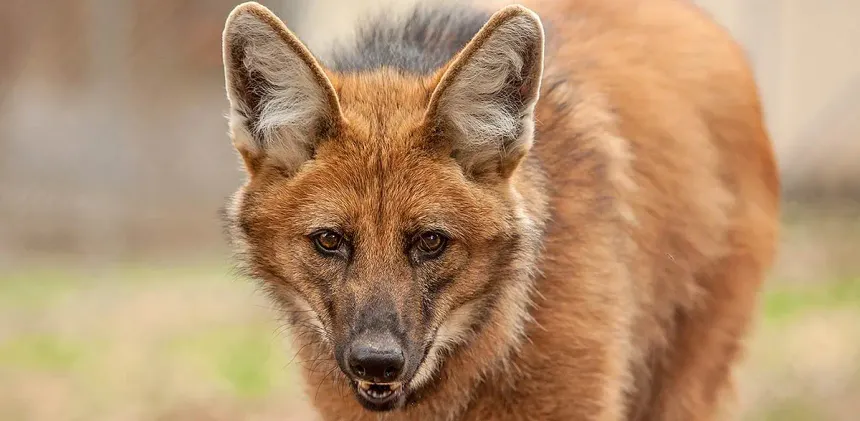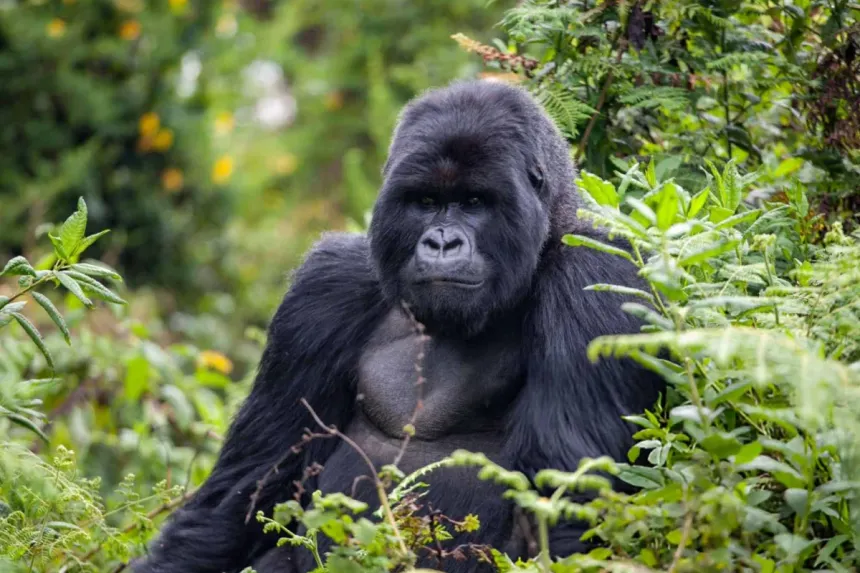Fascinating Facts About Turtles
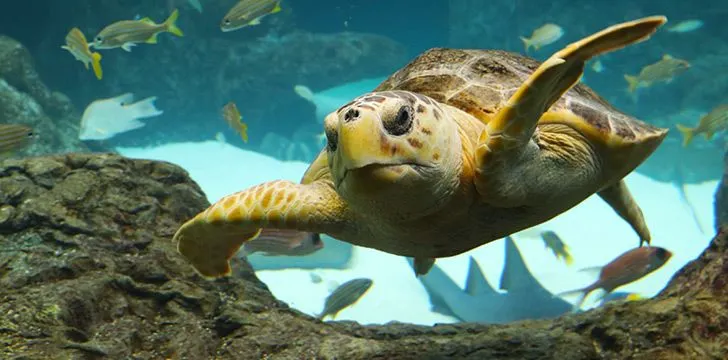
Turtles are among the most ancient and resilient creatures on Earth, having existed for over 200 million years—long before the age of dinosaurs ended. Known for their distinctive shells, slow movements, and extraordinary longevity, turtles live in a wide range of habitats, from oceans and rivers to deserts and forests. This in-depth article explores everything you need to know about turtles: their biology, species, behaviors, diets, habitats, threats, and more fascinating facts.
Scientific Classification
- Kingdom: Animalia
- Phylum: Chordata
- Class: Reptilia
- Order: Testudines
- Common Names: Turtle (general), tortoise (land), terrapin (freshwater), sea turtle (marine)
Types of Turtles
There are over 350 recognized species of turtles, divided broadly into three groups:
- Sea Turtles (e.g., Green Sea Turtle, Loggerhead, Leatherback)
- Freshwater Turtles and Terrapins (e.g., Red-Eared Slider, Painted Turtle)
- Tortoises (land-dwelling species, e.g., Galápagos Tortoise, Sulcata Tortoise)
Each group is uniquely adapted to its habitat, with different body structures, behaviors, and diets.
Physical Characteristics
- Shell: A bony structure covered by keratin scutes or soft skin (in softshell turtles). It’s fused with their ribcage and spine.
- Size: Ranges from a few inches (Bog Turtle) to over 6 feet long (Leatherback Sea Turtle)
- Weight: From less than 1 kg to over 900 kg (Leatherbacks)
- Lifespan: Many turtles live 40 to 100+ years, with some tortoises living over 150 years
Habitat and Distribution
Turtles are found on every continent except Antarctica.
- Sea Turtles: Tropical and subtropical oceans
- Freshwater Turtles: Rivers, lakes, swamps, and ponds
- Tortoises: Arid deserts, grasslands, and scrub forests
They are highly adaptable and can even survive in urban and suburban environments.
Behavior and Adaptations
- Cold-Blooded: Turtles regulate body temperature through external heat.
- Hibernation: In cold climates, some turtles brumate (a reptilian version of hibernation) during winter.
- Navigation: Sea turtles use Earth’s magnetic field to travel thousands of miles and return to their birth beaches to lay eggs.
- Defense: When threatened, most turtles retract their heads and limbs into their shells, while others emit foul odors or bite.
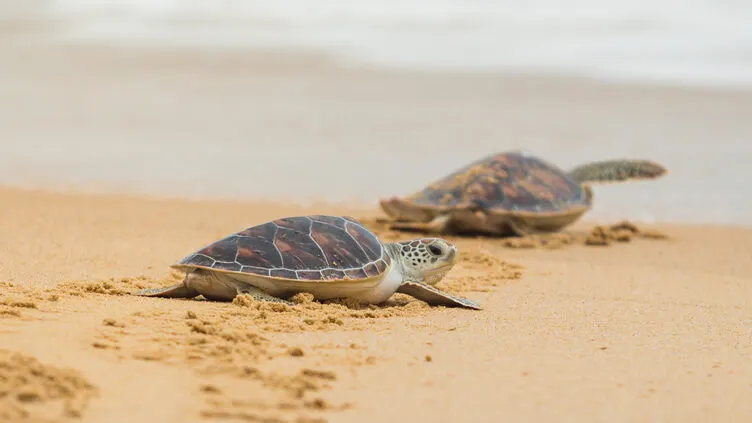
Diet
Turtle diets vary by species:
- Herbivores: Most tortoises eat grasses, fruits, and vegetables.
- Carnivores: Some freshwater turtles eat fish, insects, worms, and amphibians.
- Omnivores: Many turtles eat a mix of plants and protein (e.g., Red-Eared Slider).
- Jellyfish Eaters: Leatherback sea turtles specialize in eating jellyfish, even helping control jellyfish populations.
Reproduction and Life Cycle
- Egg-Laying: All turtles lay eggs on land—even sea turtles.
- Clutch Size: Varies from a few eggs to over 100, depending on species.
- Temperature-Dependent Sex Determination: The temperature at which eggs incubate determines the sex of hatchlings.
- Hatchlings: Often fend for themselves immediately upon hatching. Survival rates are very low due to predators and environmental challenges.
Some turtles reach reproductive maturity only after 10–30 years, contributing to their vulnerability as a species.
Communication
Turtles communicate through:
- Body language: Shell bumps, head movements
- Sound: Some sea turtles make low-frequency sounds, especially hatchlings calling from inside the nest.
- Chemical cues: For mating and marking territory
Conservation and Threats
Many turtle species are endangered or threatened due to:
- Habitat loss: Urban development, deforestation, and agriculture
- Pollution: Plastics, oil spills, and chemical runoff
- Illegal trade: Turtles are sold as exotic pets or for meat and shell products
- Climate change: Rising temperatures skew hatchling sex ratios and threaten nesting beaches
- Fishing gear: Sea turtles often get entangled in nets or ingest plastic debris
Conservation Efforts Include:
- Protected nesting sites
- Turtle rehabilitation centers
- Bans on turtle products
- Public awareness campaigns
- Tracking and satellite monitoring programs
Fascinating Turtle Facts
- Turtles don’t have teeth—they have beaks that are sharp enough to tear food.
- The leatherback is the largest sea turtle, weighing up to 2,000 pounds.
- Some turtles breathe through their cloaca—an opening used for excretion and reproduction.
- Turtles cannot leave their shells, as the shell is part of their skeleton.
- The oldest known tortoise (Jonathan) is currently over 190 years old.
- Turtles can hold their breath for hours, especially during hibernation.
- Sea turtles migrate thousands of miles between feeding and nesting grounds.
- Turtles were around during the time of the dinosaurs and survived the mass extinction.
- Some freshwater turtles can survive without oxygen by absorbing it through their skin.
- The color of turtle eggs’ incubation environment can influence the hatchling’s sex—warmer nests often produce females, cooler nests produce males.
Cultural and Mythological Significance
Turtles appear in many world cultures:
- In Native American legends, the turtle carries the world on its back.
- In Chinese mythology, turtles represent longevity, wisdom, and strength.
- In Hinduism, a turtle is one of the avatars of the god Vishnu.
- In African tales, turtles are seen as wise and cunning tricksters.
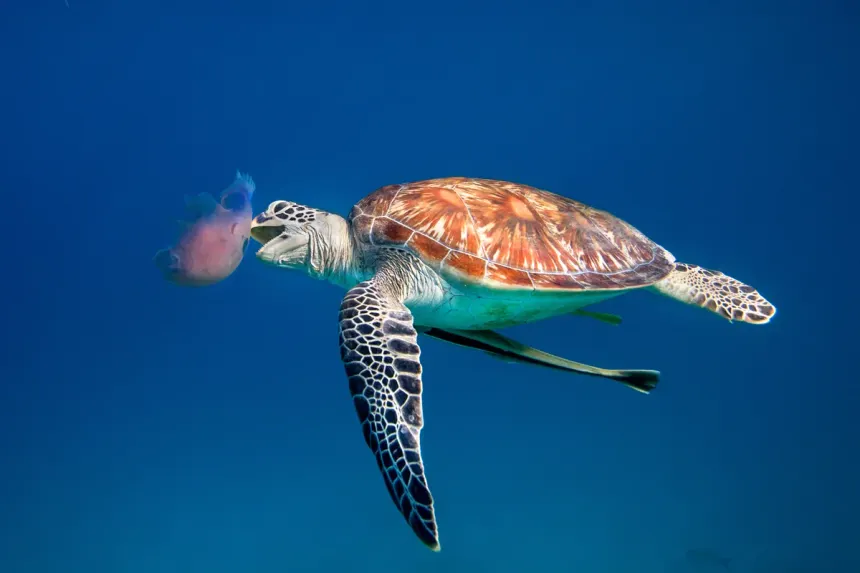
Conclusion
Turtles are extraordinary creatures that embody patience, resilience, and adaptability. Their existence spans eras, continents, and ecosystems, making them not only ecological keystones but also symbols of endurance and balance in human culture. Yet today, many turtle species face unprecedented challenges. Protecting them means preserving an irreplaceable part of Earth’s natural heritage.


